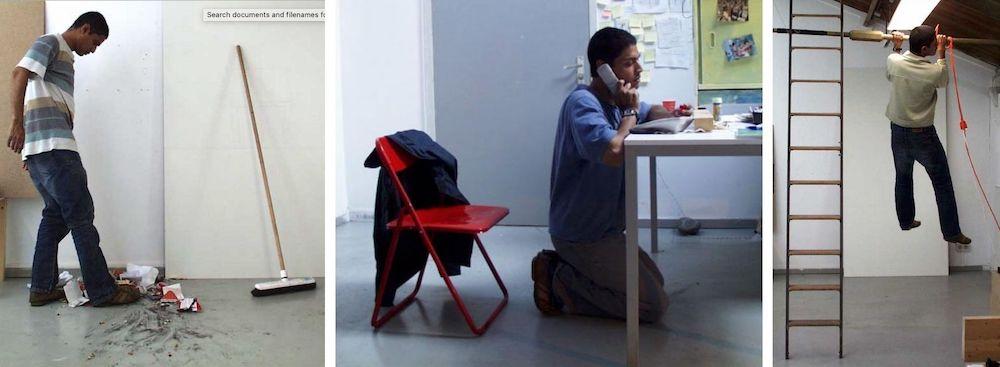Material Inversals: The Works of Kiran Subbaiah

Inversals (i, ii and iii). (2003. Images courtesy of the artist.)
Since 2012, Kiran Subbaiah seems to have dropped out of art circuits—no new works have been shown and he has not given any public presentations or talks in recent years. Those who know him say that he moved to the countryside near Bengaluru, where he lives with his family. Looking through his archive online, one finds many premonitions of this retreat. A short story titled The Genius’s Renunciation recounts the tale of a scientist, who, through rigorous study, comes to the conclusion that the only solution to humanity’s problems lies in altering human DNA. To this end, he realises that it would take him more than a lifetime to achieve such a goal and that he could not trust another human with his research. The genius adjusts his ambitions and decides to create clones of himself, who would then go on to fulfil his initial mission. After years of research, he finally reaches the day when the clone is ready to be made, but something causes him to hesitate... the ambition that had pushed him so far vanishes. Subbaiah’s story ends with the Great Genius sitting at a cafe, “...looking out for an appealing woman. Not just for the night, but someone to fall in love and raise a family with.”
In retrospect, it would be easy to read the story literally with respect to Subbaiah’s career. However, it also becomes an exciting point from which to open up his practice and the recurring ideas of utility, art and selfhood. In her essay “Video: The Aesthetics of Narcissism” on video art of the 1960s and ’70s, Rosalind Krauss explores the entwinements between video art and psychological reflection. She argues that narcissism emerges as an aesthetic form endemic to video as a medium. Subbaiah seems to be keenly aware of this implication and responds to it with a rigorous deconstruction of his own image presence, bringing the viewer in often uncomfortable proximity with his body and psyche.
1.jpg)
Left: Brakes. (2002. Ball and Castors. Image courtesy of the artist.)
Right: Discontent Content. (2002. Pail, Plumbing, Faucet, Water. Image courtesy of the artist.)
Similarly, in photographic works like the Inversal series, we see the artist dressed in reversed clothing, attempting to pose as if his back were his front. Similar "inversals" are present throughout his practice, for instance in his spatial works and objects like Discontent Content and Brakes.
In the series Doing Without, Subbaiah is photographed engaged in activities with his body that would conventionally be done using a tool. The tools in question have also been photographed, albeit unused. Through these, he brings his larger conversation about utility to the human body—enacting “dysfunction” by denying the tool its job.

Left to Right: Doing Without - Broom, Chair and Ladder. (2003. Images courtesy of the artist.)
From these considerations, perhaps one can trace Subbaiah’s clarity of thought onto his (supposed) renunciation from art. One can imagine the genius arriving at his own personal resolution about the function of art, or perhaps a quiet refusal of the professionalised labour of being an artist. In his own words, “The question of emancipation is directed as much upon it (the object's self) as on anything else. Their uselessness can be extended even to them being art objects. I see the whole advantage of making art in the fact that it need not serve any purpose.”
To read more about Kiran Subbaiah, please search for "Self as Other: The Cinematic Space of Kiran Subbaiah" in the Stories section.
All artworks by Kiran Subbaiah.




